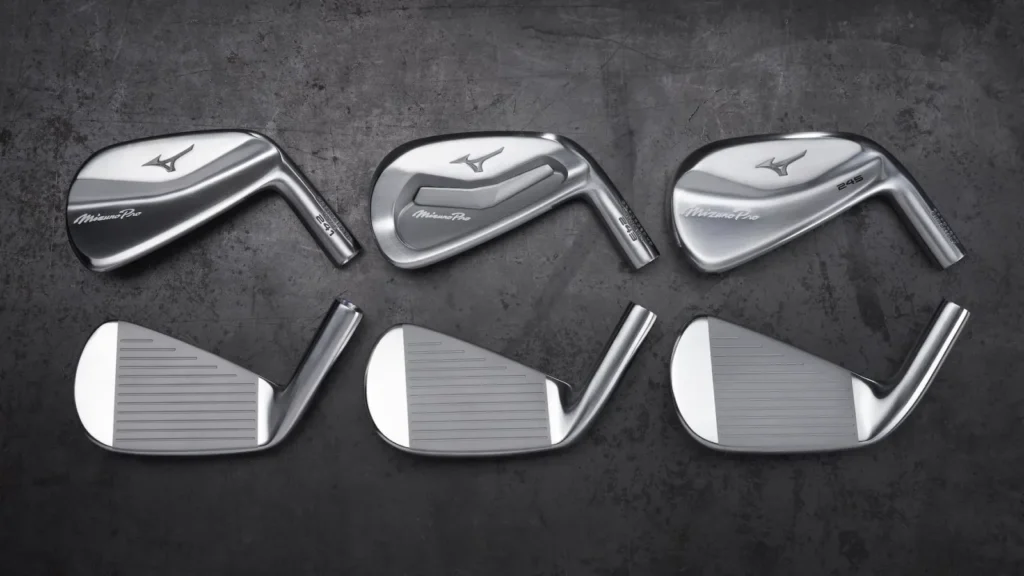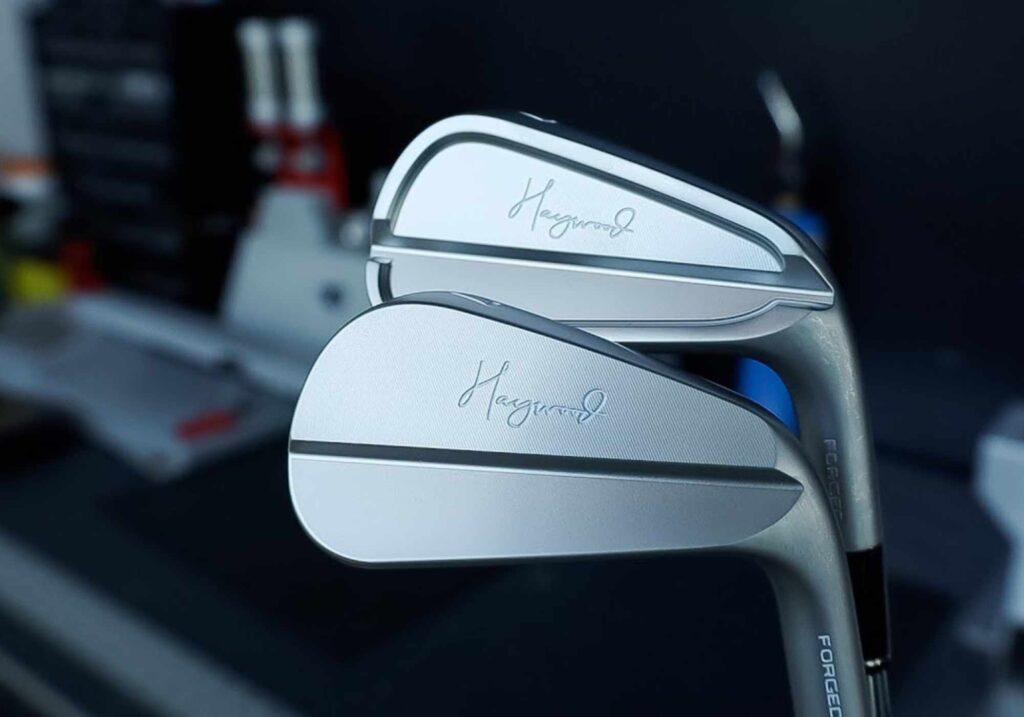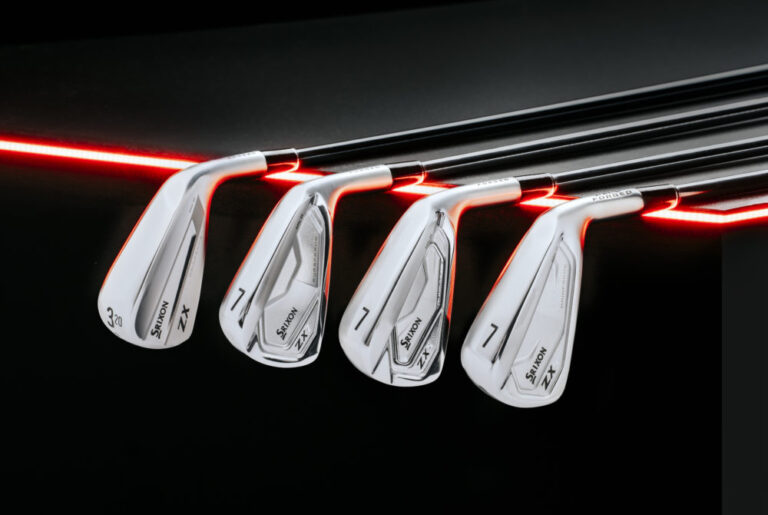Walk into a pro shop or scroll through a manufacturer’s website, and you’ll notice a growing trend: more iron sets are being sold in “split” or “combo” configurations. Instead of buying one uniform set of irons from 4–PW, golfers are mixing and matching models within the same family. A player might have more forgiving long irons, more workable short irons, and everything in between.
But why is this happening, and more importantly, should you consider it for your own bag?
What is a split iron set?
A split set (sometimes called a combo set) blends different iron models into one set. For example:
- 4–6 irons might be built for forgiveness and high launch.
- 7–9 irons might prioritize feel, precision, and workability.
- Wedges are often muscle-back or blade-style for maximum control.
It’s essentially a way to customize performance throughout the set so that each club is doing the job it’s best suited for.
Why manufacturers are offering more split sets
Not long ago, split sets were mostly a tour player thing. Pros would mix in a cavity-back long iron or even a utility iron alongside their blades. But now, OEMs are designing iron families with blending in mind.
Why the shift?
- Performance gaps: Launch monitors and fitting data show that most golfers struggle more with long irons than short irons. Splitting sets bridges that gap.
- Consumer demand: Golfers see pros blending sets and want similar options.
- Fitting flexibility: By designing iron families (like Titleist’s T-Series, TaylorMade’s P-Series, or Callaway’s Apex line) with consistent loft structures and looks, brands make it easy to mix and match without weird distance gaps.
- Marketing appeal: Offering “combo-ready” sets signals that the company is catering to all skill levels, not just single-digit handicaps.
How a split set helps the everyday golfer
The average golfer doesn’t need to hit a butter-cut 6-iron into a tucked pin—they need to launch it high enough to hold a green. Split sets recognize that different parts of your bag serve different purposes.
Here’s how it can help:
- Forgiveness where you need it most: Long irons (4–6) are traditionally harder to hit, so using a more forgiving, hollow-body or cavity-back design gives you better launch and more consistency.
- Precision where it counts: Scoring irons (7–9) benefit from more compact, feel-oriented heads so you can control trajectory and spin.
- Consistency through the set: OEMs design their split sets to maintain similar toplines, offset, and feel, so you don’t notice a jarring change in looks or performance.

Examples from major brands
- Titleist T-Series: Common split setups include T200 long irons blending into T150 or T100 short irons.
- TaylorMade P-Series: Many golfers pair P790 long irons with P770 or P7MC short irons.
- Callaway Apex line: Hollow-bodied Apex UT or Apex Pro in the long irons, blended into Apex CB or MB in the short irons.
- Mizuno: Known for their fitting focus, Mizuno often encourages mixing their JPX or Pro Series irons to match performance goals.
- Srixon ZXi Series: Designed with progressive shaping, so blending ZX4i/ZXi5 long irons into ZXi7 scoring irons feels seamless.
- Cobra King irons: The new FF (Flow Family) approach encourages progressive setups with multiple head styles.
Are there drawbacks?
Split sets aren’t for everyone. Some golfers actually prefer the continuity of a single iron model throughout. Possible downsides include:
- Transition feel: Even with careful design, you may notice differences in feel or turf interaction when switching between models.
- Fitting required: To do it right, you need a proper fitting to avoid yardage gaps or overlapping clubs.
- Cost: Mixing models can sometimes be more expensive than a standard boxed set.
Should you try a split set?
If you’re a golfer who struggles with long irons but likes the look and feel of more compact short irons, a split set could be a game-changer. The easiest way to test it out is during a fitting session where you hit a forgiving long iron head next to a players-style short iron and see how the numbers and feel compare.
Final thoughts
Split iron sets aren’t just a passing trend, rather they’re becoming the new normal in golf equipment. OEMs are building their lines to encourage blending because it solves real problems for golfers of every skill level. If you want forgiveness where you need it and precision where it matters most, a split set might be the smartest way to build your bag.

FAQ on split iron sets
Do pros use split sets?
Yes, many pros blend their iron sets. A common setup is a slightly more forgiving cavity-back or utility long iron paired with blade-style scoring irons. The difference is that tour players are chasing shot-shaping and turf interaction, while everyday golfers are usually chasing forgiveness and distance consistency. The principle, however, is the same, just different irons for different jobs.
How do I know if I need a split set?
If you find your long irons hard to launch, or if there’s a big distance gap between your hybrids and irons, a split set may help. Likewise, if you love the feel of compact short irons but don’t have confidence in the longer clubs, blending models gives you the best of both worlds. A launch monitor fitting session is the best way to find out.
Are split sets harder to adjust to?
Not really with how modern OEMs design their iron lines with blending in mind. They match loft progressions, offsets, and even topline thickness so the transition feels natural. It might take a few rounds to build confidence in the new look, but most golfers find the change positive.
Can I create a split set on my own?
Yes. Many golfers experiment by swapping in one or two forgiving long irons without committing to a full split set. If you like the results, you can build out a proper blended set over time. Just make sure your lofts and distances flow smoothly.
